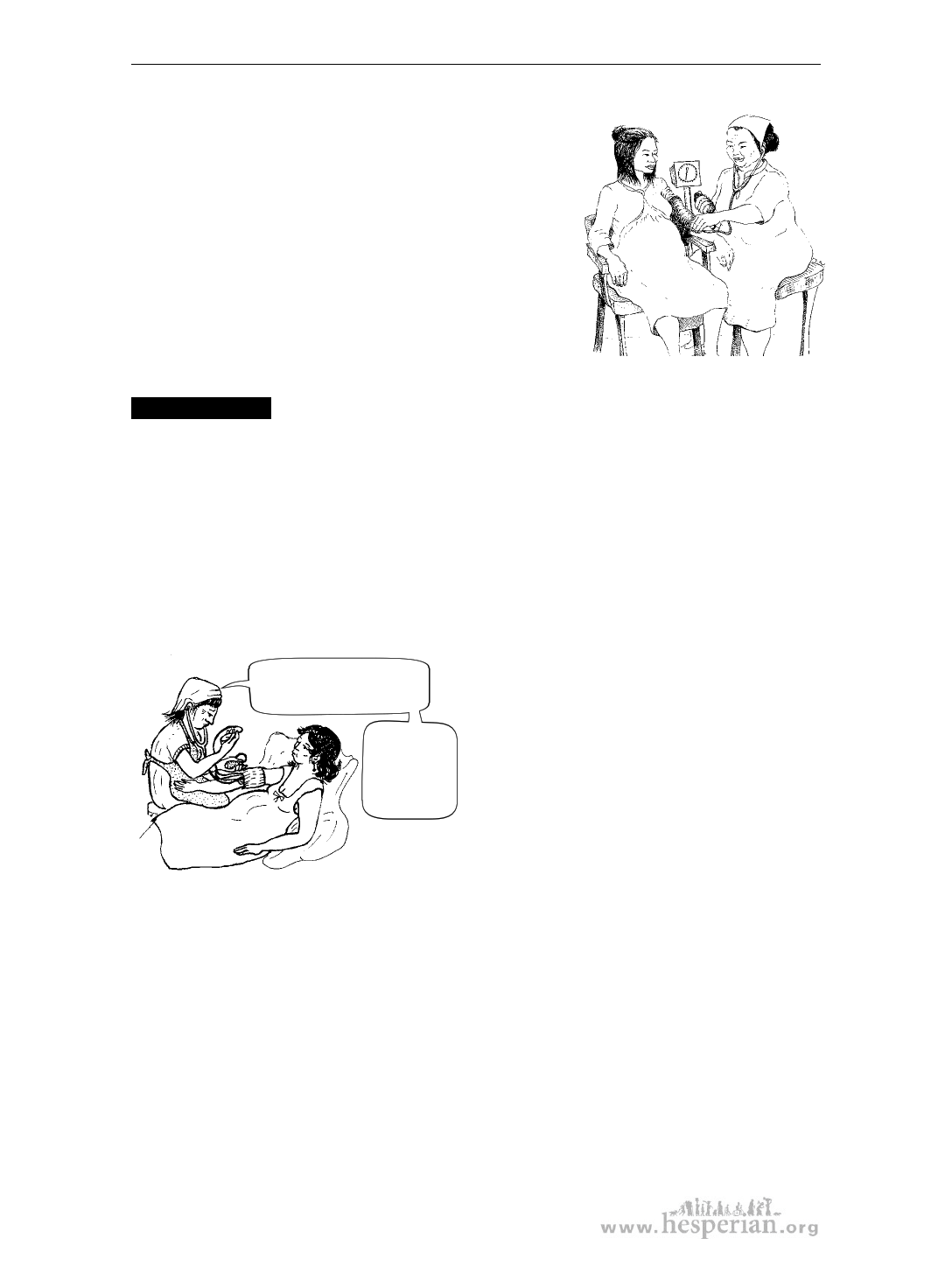
Chapter 11: Opening – stage 1 of labor
The mother’s blood pressure
If you have a blood pressure cuff and stethoscope,
check the mother’s blood pressure once every hour,
between contractions (see page 122). Each time you
check her blood pressure, write it down. This way
you can watch for changes over time.
As long as her blood pressure stays below 140/90
and is close to the blood pressure she had during
pregnancy, checking it every hour is enough. If you
notice her blood pressure going up, even just a
little, check it every 30 minutes.
Wa r nin g s ig n s
Blood pressure goes down
If blood pressure suddenly drops 15 points or more in the bottom number, this is
a dangerous warning sign. This usually means that the mother is bleeding heavily.
If you do not see any bleeding, her placenta may have detached (see page 184) —
she needs medical help now.
Blood pressure goes up
Blood pressure of 140/90 or higher is a warning sign. The woman may have
pre-eclampsia. Pre-eclampsia can cause convulsions (eclampsia), detached
placenta, bleeding in the brain, or a
Your blood pressure
is too high.
severe hemorrhage. The baby may die,
and the mother may die as well.
I think we
should go
Page 125 explains more about
pre-eclampsia.
to the
hospital.
If the mother has blood
pressure of 150/90 or higher
and protein in her urine, she
already has pre-eclampsia.
Get medical help right away.
If a woman has rising blood pressure, but you are not sure yet that she has
pre-eclampsia, check for these other signs:
• strong headaches
• blurred or double vision
• sudden, steady pain in the top of the belly
• overactive reflexes (see page 125)
All of these can be signs of serious pre-eclampsia — get medical help. If she
ever has blood pressure of 150/110 or higher, it does not matter if she has any
other signs — get medical help immediately.
180
A Book for Midwives (2010)